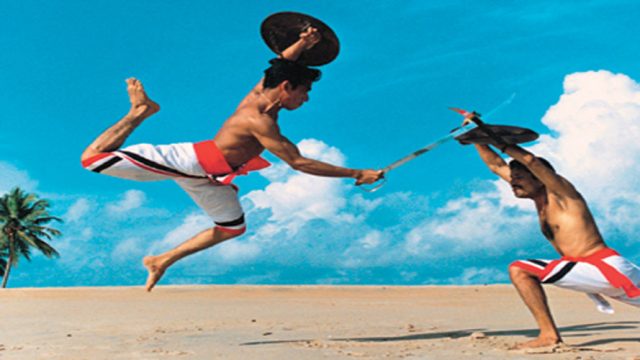Kalaripayattu, the martial art form that’s Kerala’s legacy, emphasises skill over flashiness, mind over matter. It is combat that has a unique, rhythmic feel that can make you forget that what you are seeing was once a way of war. One of the oldest martial arts in existence, Kalaripayattu takes years to master. A combination of art, science and medicine, it is now receiving attention worldwide. Kalaripayattu has a history spanning centuries. Its origins are synonymous with legends about Kerala, and Parashurama, the axe-wielding creator of the state, who is also credited with having gifted Kalaripayattu to Keralites. He is said to have established Kalari centres, and trained warriors in the art form that demands not just tremendous physical fitness but also the suppleness and ferocity of wild animals. Indeed, Kalaripayattu’s movements draw inspiration from animals, and there are even poses named after the boar, the elephant, the lion, the fish and the serpent, amongst others. Mental discipline is important too, for the battles are fought as much in the mind as on the ground. And it does require a certain amount of willpower to be able to swing weapons with eyes wide shut – as is expected of Kalari fighters!
The word ‘Kalari’ denotes a gymnasium or school and ‘payattu’ means both exercise and fight. Perfection in the discipline comes after years of concentrated training at the kalari. The process is spread over three stages, starting with Meippayatt (exer-cises to control the body). This is followed by Kolthari (fighting with sticks) and Ankathari (felicity in using metal weapons such as daggers and swords). The weapons commonly used include otta (curved stick), urumi (a flexible sword, popular with women) and kettukari (long stick).
Talented disciples go on to learn much more. They are taught secrets about the human marma (108 highly sensitive, vulnerable and vital parts of the body) and the techniques of Verum Kai Prayogam (fighting with bare hands). This is the finale of what is usually at least a decade-long training process.
Most of what we know about Kalari today is gleaned from practitioners of the art, including the likes of the late CV Narayanan Nair and Chirakkal T Sreedharan Nair, who wrote a book titled Kalarippayattu in 1937. If legends were to be given the go-by, Kalaripayattu’s origins can be traced to the period between the 9th and the 12th centuries, when many feudal lords were constantly waging wars over their small kingdoms. Each region had its own small band of trained fighters, taken mostly from the Nair community, for protection. These soldiers, it is said, gave Kalaripayattu its current form.
Legends about valiant Kalari fighters are to be found in popular ballads such as the Vadakkan Pattukal and Thekkan Pattukal (Ballads of the North and South, respectively). Vadakkan Pattukal narrates the story of Unniarcha, a beautiful woman who was also a proficient Kalari fighter. Similarly, the ballads narrate the soulful story of Thacholi Othenan, a valiant fighter who was killed by the gun, a symbol of Western power. It’s a tale that has woven its way into popular Malayalam cinema.
Perhaps what sets Kalaripayattu apart is the fact that it is something more than just a martial art. It has strong links with Ayurveda, and Kalarichikilsa (medical treatment), which specializes in curing ailments such as back pain and spondylitis – using the knowledge about vital spots, otherwise meant to put the enemy out of action. Every Kalari fighter is also given uzhichil or massages using medicinal oils, to make the body supple. These massages are today part of the Kalari treatment.
Kalaripayattu has also made an integral contribution to two classical dance forms of Kerala – Theyyam and Kathakali, both of which were once the preserve of the Nair community, the original Kalari fighters. It has always been recognised as a forerunner to Kung Fu and counts among its fans, the inimitable Jackie Chan.




